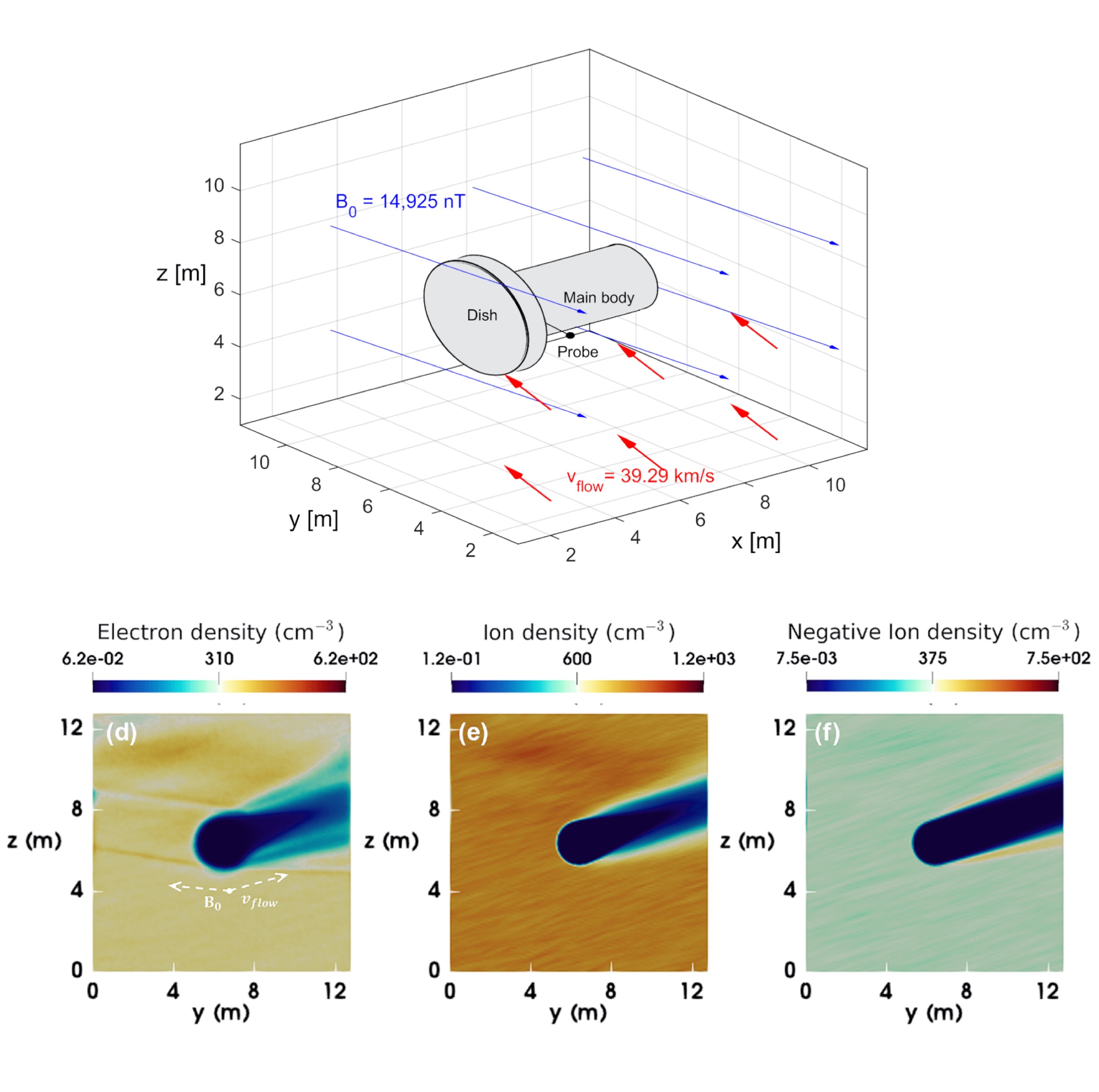MIST
Magnetosphere, Ionosphere and Solar-Terrestrial
Particle-In-Cell Simulations of the Cassini Spacecraft's Interaction with Saturn's Ionosphere during the Grand Finale
By Zeqi Zhang (Imperial College London)
Cassini's Grand Finale at Saturn was the first time the giant planet’s atmosphere had been sampled in-situ. The ionosphere, and indeed the Saturn system as a whole, provided a uniquely different environment compared to the terrestrial planets and also Jupiter, with populations of charged dust grains influencing the plasma dynamics. When passing through Saturn’s ionosphere, Cassini observed an ionosphere dominated by ice and dust particles which continually rain inward from Saturn’s vast ring system and soak up free electrons, thus producing a dusty complex plasma. Understanding how incident plasma currents charge a spacecraft relative to its surrounding environment is important for interpreting the surrounding plasma conditions and on-board plasma measurements. In this article, we describe three dimensional Particle-In-Cell simulations of the Cassini spacecraft’s interaction with plasmas representative of Saturn's ionosphere during the Grand Finale.
The global simulations revealed complex interaction features such as a highly structured wake containing spacecraft-scale vortices and electron wings, a Langmuir wave analogue of Alfvén wings, which propagated at small angles to the magnetic field and upstream into the pristine plasma ahead of Cassini. The results explain how a large negatively charged plasma component combined with a large negative to positive ion mass ratio is able to drive the spacecraft to the observed positive potentials, a previously unexplained phenomenon observed during end-of-mission. Despite the high electron depletions, the electron properties are found as a significant controlling factor for the spacecraft potential together with the magnetic field orientation which induces a potential gradient directed across Cassini's asymmetric body. This study reveals the global spacecraft interaction experienced by Cassini during the Grand Finale in a plasma environment dominated by a class of physics quite different to those considered in the classical view of spacecraft charging.

Figure 1. The upper schematic shows the simulation configuration for Cassini during Grand Finale Rev 292 ingress at 2500 km Saturn altitude. The lower panels shows the electron (left-hand panel), ion (centre panel) and negative ion (right-hand panel) densities in the Y-Z plane through Cassini’s main body. The plasma wake is longer for the larger species and electron wing structures are visible in the electron density which propagate at small angles to the ambient magnetic field.
Please see the paper for full details:
Zhang, Z., Desai, R.T., Miyake, Y., Usui, H., Shebanits, O., (2021). Particle-In-Cell Simulations of the Cassini Spacecraft’s Interaction with Saturn’s Ionosphere during the Grand Finale. Monthly Notices of the Royal Astronomical Society, Volume 504, Issue 1, pp 964 - 973, https://doi.org/10.1093/mnras/stab750.